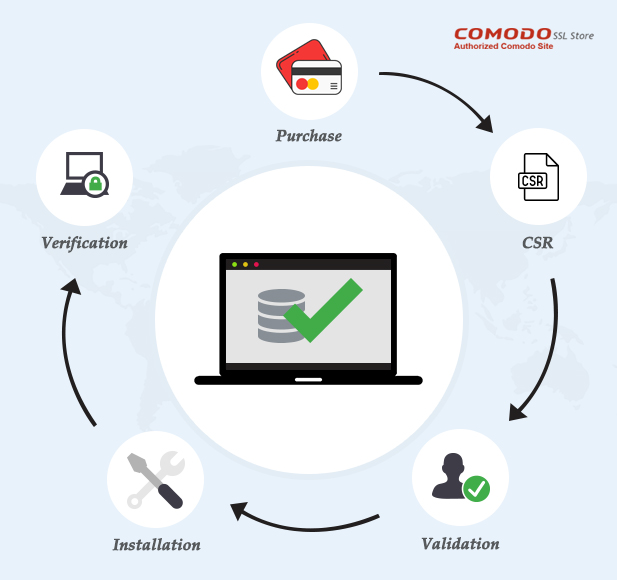How to install Comodo SSL Certificate on your Website?
Step-by-Step Guide on How to install Comodo SSL Certificate on your Website?
Securing the website by installing a Comodo SSL certificate helps build trust with visitors and helps the website gain wider acceptance as a secure and authentic domain. Installing the Comodo SSL certificate on the web server can be completed by performing below mentioned short and straightforward steps.

Step 1: Making the Purchase
The first step in the process to get HTTPS enabled on the website involves placing the order. First, you need to log in with your credentials or in case if you don’t have an account, register yourself with your true credentials. After that, select the SSL certificate that you want your website to be shielded by and add it to the cart. Finally, place the order.
Step 2: Generating the Certificate Signing Request (CSR)
Before issuing the SSL certificate, the certificate authority (CA) needs the users to submit a request, known as certificate signing request (CSR). The CA asks the user to generate and submit CSR in order to validate the authenticity of the user and his/her organization. The buyer needs to submit his/her domain details while submitting the CSR.
Step 3: Validation Process
Validation and encryption are the two primary purposes of an SSL certificate. Before the issuance of an SSL certificate, the certificate authority (CA) needs to verify the details of the domain owner as well as his/her organization. The verification process depends on the type of certificate one wants as well as on the certificate authority (CA). This is the most crucial step from the CA’s point of view.
Step 4: Installing the Certificate
Once the SSL certificate is issued, the user needs to get this certificate get enabled on the web server. One needs to install two other certificates along with the main SSL certificate. These two certificates consist of an intermediate certificate and a root certificate. The installation process differs from one server to another. On our site, you can find the detailed installation guide to install SSL certificate on various web servers.
Step 5: Verifying SSL Installation
Having installed the SSL certificate on the web server, the ultimate step is to validate whether your website has been migrated to HTTPS or not. Using our SSL Checker tool, you can make sure if the SSL certificate has been installed rightly.
Here are some of the frequently asked questions when it comes to installing an SSL certificate.
What documents are needed for verification?
The nature of validation process, as well as the documents required, vary from one certificate to another. Find out more details on our support page
How can I reissue my SSL certificate?
The procedure of reissuing a certificate is same as issuing a new one. You get an unlimited number of reissuances with us.
Which web server do I have?
We suggest contacting your hosting provider for it.
What if I want my money back after using the SSL certificate for some time?
We provide 30-day risk-free return policy to all of our customers.
Save Up to 75% On
Comodo SSL Certificates
Tip: You can typically save a significant amount by buying your SSL certificate direct instead of through your web hosting company. We sell all Comodo SSL certificates at up to 75% off.


 (17 votes, average: 4.35 out of 5)
(17 votes, average: 4.35 out of 5)